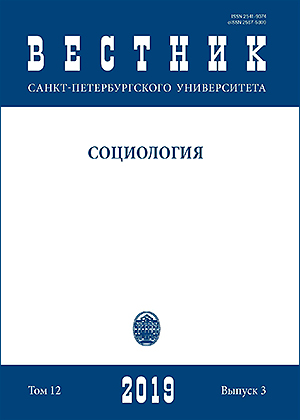Инновационное поведение сотрудников российских и иностранных компаний
DOI:
https://doi.org/10.21638/spbu12.2019.301Аннотация
Статья посвящена анализу индивидуального инновационного поведения российских работников в бизнес-организациях с преобладанием отечественного и иностранного капитала. В центре внимания авторов — индивидуально-личностные и организационные факторы, влияющие на три последовательных этапа инновационного процесса на микроуровне: генерирование новых идей, их продвижение и реализацию. Эмпирическая часть работы основана на результатах стандартизированного опроса 623 специалистов и руководителей среднего и нижнего уровней в 17 организациях частной формы собственности. Результаты исследования показали, что в компаниях с отечественными и зарубежными собственниками более высокая инновационная активность, выражающаяся в генерировании идей и выдвижении инновационных предложений, характерна для квалифицированных и высокостатусных работников — мужчин, руководителей, обладателей двух и более вузовских дипломов, высоко оценивающих уровень своих профессиональных компетенций. На этапе реализации инноваций сотрудники компаний с преобладанием зарубежного капитала чаще отмечают результативность своих предложений. Это позволяет сделать вывод о наличии в этих организациях более благоприятной институциональной системы организации инновационной деятельности по сравнению с чисто российскими компаниями. Более высокая индивидуальная инновационная активность работников иностранных компаний объясняется наличием управленческих стимулов инновационного поведения. В компаниях с зарубежными собственниками практикуются прямые поощрения инновационной активности в виде материальных и карьерных вознаграждений. В них шире, чем в российских, круг работников, привлекаемых к принятию управленческих решений. Кроме того, инновационные предложения, выдвигаемые работниками компаний с преобладанием иностранного капитала, носят более фокусированный и целевой характер. Авторы подчеркивают необходимость формирования благоприятной организационной среды в виде формальных и неформальных, прямых и косвенных стимулов инновационного поведения, которые способны обеспечить синергетический эффект от взаимодействия индивидуально-личностных и организационно-управленческих факторов инновационной активности работников. Ведущая роль, по мнению авторов, должна отводиться отбору сотрудников с ярко выраженной профессионально-содержательной мотивацией деятельности, созданию организационного климата, благоприятного для свободного обмена информацией между сотрудниками разного уровня, а также развитию прямого стимулирования инновационной активности.
Ключевые слова:
инновационное поведение, инновационная активность, стимулирование инновационного поведения, бизнес-организации, российские и иностранные компании
Скачивания
Библиографические ссылки
References
Загрузки
Опубликован
Как цитировать
Выпуск
Раздел
Лицензия
Статьи журнала «Вестник Санкт-Петербургского университета. Социология» находятся в открытом доступе и распространяются в соответствии с условиями Лицензионного Договора с Санкт-Петербургским государственным университетом, который бесплатно предоставляет авторам неограниченное распространение и самостоятельное архивирование.




